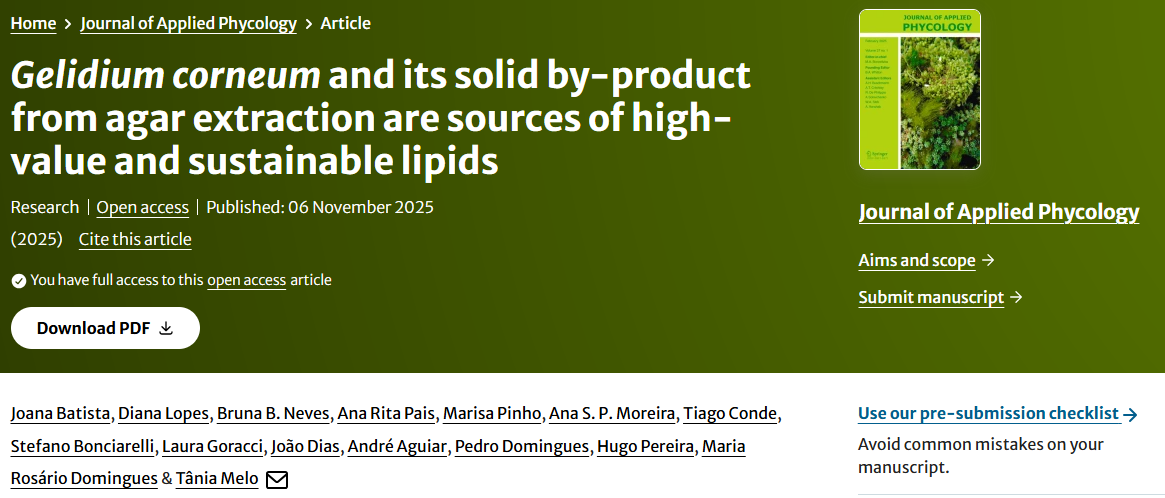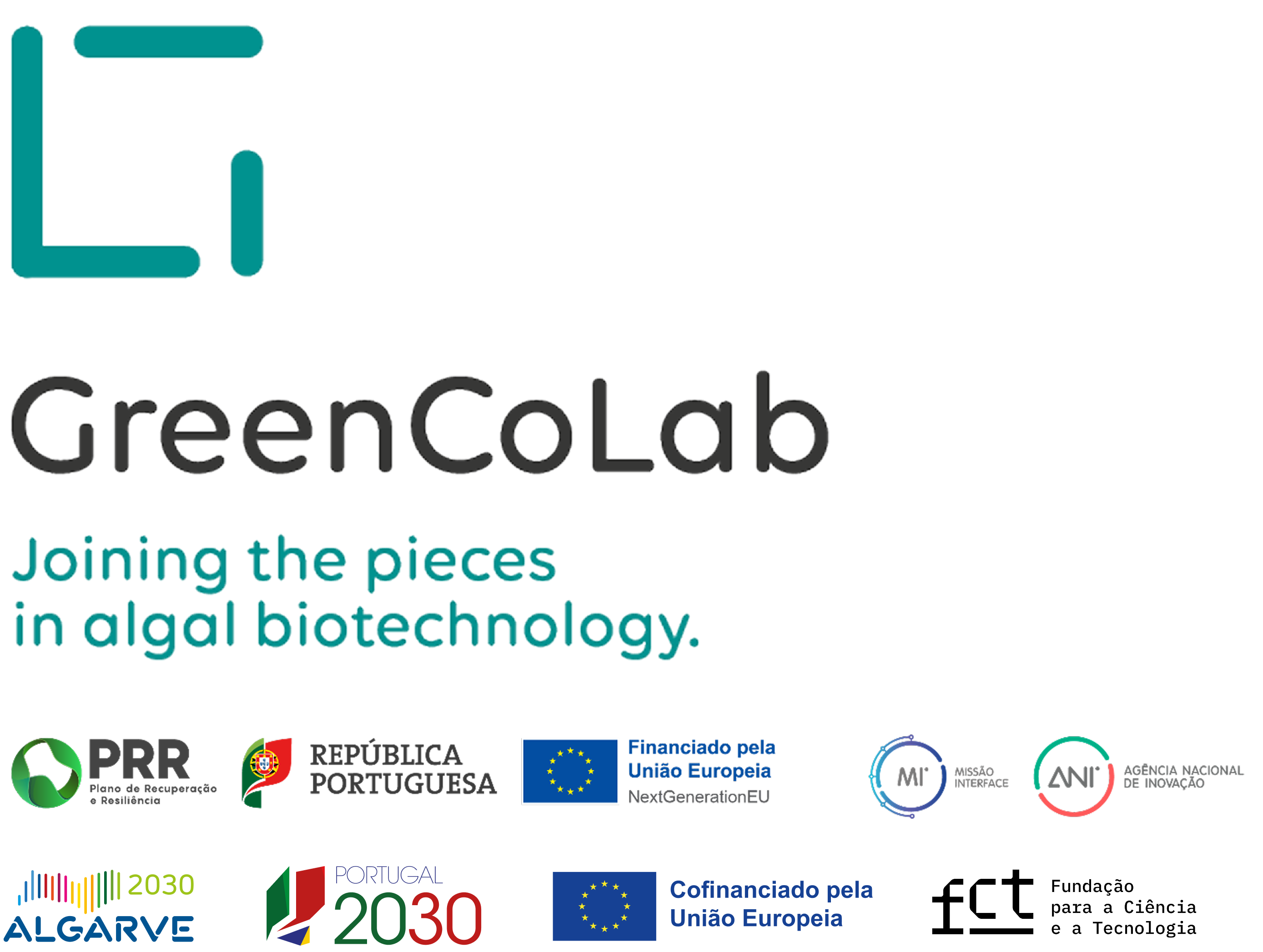

TITLE
Gelidium corneum and its solid by-product from agar extraction are sources of high-value and sustainable lipids
JOURNAL
Journal of Applied Phycology
AUTHORS
Joana Batista, Diana Lopes, Bruna B. Neves, Ana Rita Pais, Marisa Pinho, Ana S. P. Moreira, Tiago Conde, Stefano Bonciarelli, Laura Goracci, João Dias, André Aguiar, Pedro Domingues, Hugo Pereira, Maria Rosário Domingues & Tânia Melo
ABSTRACT
The red alga Gelidium corneum is commonly harvested for agar extraction, producing significant biomass residue that remains underutilized. Gelidium corneum and its residue represent promising sources of high-value compounds, including lipid ingredients, encompassing omega-3 and omega-6 polyunsaturated fatty acids, with potential applications in foods and cosmetics. Algae lipids are quite diverse and complex, however the lipidome of G. corneum and its residue, along with their bioactive potential, remain largely unexplored. This study characterized the lipid signatures of G. corneum and its residue after agar extraction using reversed-phase liquid chromatography-tandem mass spectrometry (C18-RP-HPLC-MS/MS) and gas chromatography-mass spectrometry (GC-MS) for esterified fatty acids (FAs) profiling. Despite low lipid content (<1% dry weight), G. corneum exhibited a higher glycolipid content, while the residue was richer in phospholipids and triacylglycerols. Nine FAs were identified, with FA 20:4 n-6 and FA 20:5 n-3 more abundant in G. corneum, and FA 18:1 n-9 and FA 18:2 n-6 in the residue, highlighting their nutritional and functional values. Their lipid profile comprised more than 400 lipid molecular species, following the trend of more glycolipids in G. corneum and phospholipids in the residue. Complex lipids with bioactive properties were identified in both matrices, expanding our knowledge of the lipid signature of this seaweed. Gelidium corneum lipids showed higher antioxidant scavenging activity and great anti-inflammatory potential by inhibiting cyclooxygenase-2 activity. Although neither matrix inhibited α-amylase, residue lipids effectively inhibited α-glucosidase activity. These findings emphasize G. corneum and its residue as sources of high-value lipids for sustainable biotechnological applications, including foods, nutraceuticals and cosmetics.



